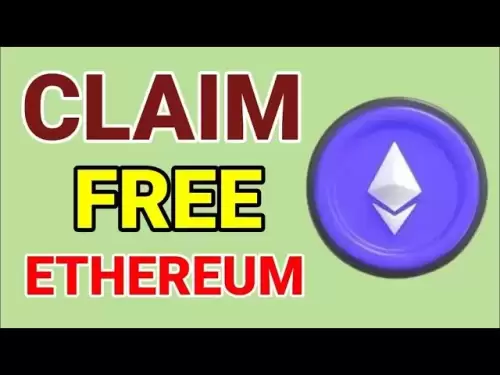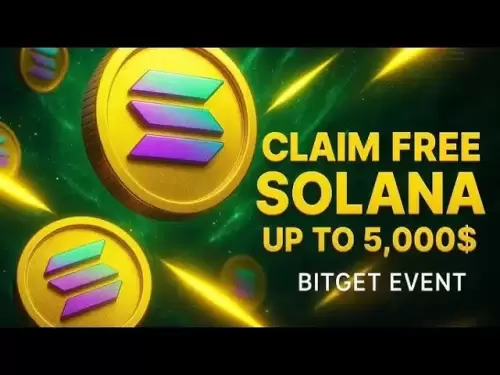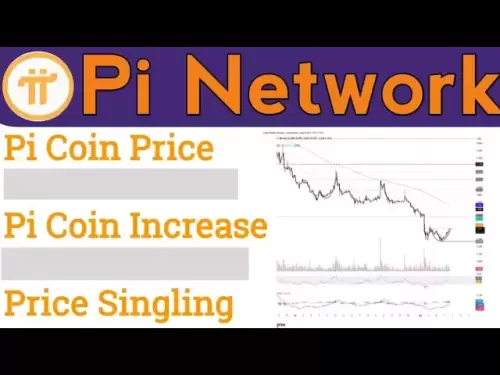-
 Bitcoin
Bitcoin $118300
1.01% -
 Ethereum
Ethereum $4215
0.69% -
 XRP
XRP $3.198
-3.83% -
 Tether USDt
Tether USDt $1.000
-0.01% -
 BNB
BNB $803.4
-0.53% -
 Solana
Solana $180.3
-0.67% -
 USDC
USDC $0.9998
-0.01% -
 Dogecoin
Dogecoin $0.2334
-1.49% -
 TRON
TRON $0.3394
0.86% -
 Cardano
Cardano $0.7980
-1.45% -
 Chainlink
Chainlink $22.19
6.65% -
 Hyperliquid
Hyperliquid $43.41
0.13% -
 Stellar
Stellar $0.4407
-3.13% -
 Sui
Sui $3.843
-2.24% -
 Bitcoin Cash
Bitcoin Cash $564.7
-3.74% -
 Hedera
Hedera $0.2588
-3.41% -
 Ethena USDe
Ethena USDe $1.001
0.00% -
 Avalanche
Avalanche $23.64
-3.37% -
 Litecoin
Litecoin $120.0
-4.01% -
 Toncoin
Toncoin $3.342
-1.11% -
 UNUS SED LEO
UNUS SED LEO $9.038
0.60% -
 Shiba Inu
Shiba Inu $0.00001347
-0.81% -
 Uniswap
Uniswap $10.69
-4.58% -
 Polkadot
Polkadot $4.034
-1.30% -
 Dai
Dai $1.000
0.01% -
 Bitget Token
Bitget Token $4.472
-1.52% -
 Cronos
Cronos $0.1571
-3.04% -
 Pepe
Pepe $0.00001207
-2.21% -
 Monero
Monero $273.8
-3.19% -
 Ethena
Ethena $0.7520
2.75%
What is the destruction mechanism of bnb coin?
Binance's BNB "destruction" isn't a self-destruct; it's a buyback and burn program using quarterly profits to remove BNB from circulation via a public, verifiable burn address. The amount burned varies, impacting scarcity but not guaranteeing price increases.
Mar 05, 2025 at 01:37 am
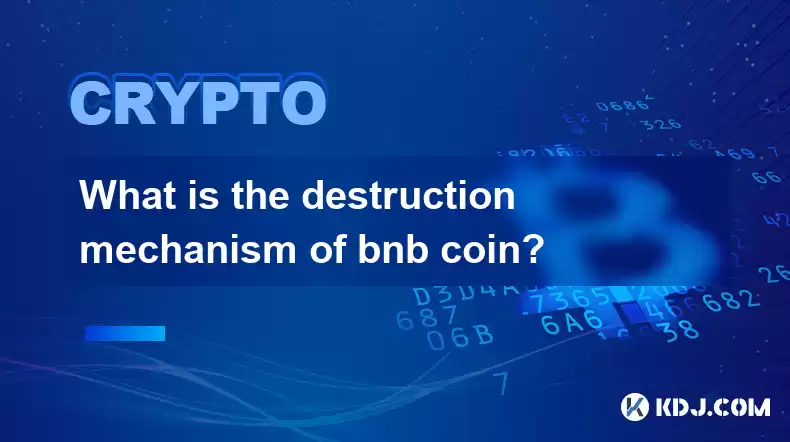
Key Points:
- BNB coin's "destruction mechanism" isn't a direct burning like some other tokens. It's more accurately described as a buyback and burn program implemented by Binance.
- The amount of BNB burned varies depending on Binance's quarterly profits and the chosen percentage allocated for burning.
- Binance's transparency regarding the burns is a crucial factor in maintaining user confidence. The burns are publicly announced and verifiable on the blockchain.
- The frequency of BNB burns influences its scarcity and potentially its value, impacting the overall market sentiment.
- While the burn mechanism reduces the circulating supply, its effect on price is complex and influenced by many other market factors.
What is the destruction mechanism of BNB coin?
The term "destruction mechanism" for BNB is a bit of a simplification. There isn't a programmed self-destruct function within the BNB token itself. Instead, Binance, the cryptocurrency exchange that created BNB, employs a buyback and burn program. This involves Binance using a portion of its quarterly profits to purchase BNB from the open market and then permanently remove those coins from circulation. This process effectively reduces the total supply of BNB over time.
The actual "destruction" is the removal of these purchased BNB tokens from the circulating supply. They are not simply deleted; rather, they are sent to a "burn address," a special wallet address from which no one can access or spend the funds. This action permanently removes them from the ecosystem.
The amount of BNB burned in each quarter is not fixed. Binance decides what percentage of its profits will be allocated to the burn. This percentage can vary from quarter to quarter, influencing the quantity of BNB destroyed in each cycle. The announcement of these burns is made publicly, usually accompanied by details of the transaction and the exact number of BNB removed. This transparency is designed to build trust and demonstrate accountability to the BNB community.
This buyback and burn mechanism is a key aspect of BNB's tokenomics. It aims to reduce the circulating supply, potentially increasing the scarcity and, in theory, increasing the value of the remaining BNB tokens. However, the actual impact on the price is influenced by a multitude of market factors, including overall market sentiment, adoption rates, and competing cryptocurrencies.
How does the BNB burn process work step-by-step?
The process generally follows these steps:
- Binance generates profits: Binance operates as a cryptocurrency exchange, earning fees from trading volume and other services.
- Allocation for burn: A portion of Binance’s quarterly profits is designated for the BNB burn.
- BNB purchase: Binance purchases BNB from various exchanges using its allocated funds.
- Transfer to burn address: The purchased BNB is then transferred to a designated burn address, a wallet address designed for permanently locking the coins.
- Verification: The burn transaction is made public and verifiable on the blockchain, allowing anyone to independently confirm the removal of the coins.
What factors influence the amount of BNB burned?
The quantity of BNB burned each quarter is not predetermined. Several factors influence this:
- Binance's profitability: The higher Binance's profits, the larger the amount of BNB that can be purchased and burned.
- Binance's strategic decisions: Binance management decides what percentage of its profits will be allocated to the burn program. This percentage can fluctuate.
- Market conditions: While not a direct influence on the burn itself, overall market conditions can indirectly impact Binance’s profits and therefore the amount available for burning.
How does the BNB burn affect the price?
The effect of the burn on the price of BNB is a complex issue. While reducing the circulating supply theoretically increases scarcity and should exert upward pressure on the price, many other factors are at play:
- Market sentiment: Positive sentiment surrounding the burn can drive demand and increase the price. Negative sentiment can have the opposite effect.
- Overall crypto market: The broader cryptocurrency market's performance significantly influences BNB's price, irrespective of the burn.
- Adoption and utility: Increased adoption of BNB and its use in the Binance ecosystem can boost its price regardless of the burn program.
- Competition: The performance of competing cryptocurrencies also plays a crucial role in determining BNB's price.
Frequently Asked Questions:
Q: Is the BNB burn a guaranteed event?
A: While Binance has consistently conducted BNB burns in the past, there's no guarantee it will continue indefinitely. The decision rests on Binance's profitability and strategic choices.
Q: Where can I track the BNB burn history?
A: Binance usually publishes announcements detailing each burn event, including the transaction details. You can usually find this information on their official website and through their social media channels. The transactions themselves are verifiable on the Binance Smart Chain blockchain.
Q: Does the BNB burn guarantee price appreciation?
A: No. While the burn reduces supply, price is determined by market forces, and the burn is just one factor among many influencing price.
Q: How often are BNB coins burned?
A: BNB burns typically occur on a quarterly basis, though the exact timing may vary slightly.
Q: What is a burn address?
A: A burn address is a special cryptocurrency address designed to permanently lock funds. BNB sent to a burn address is effectively removed from circulation. It's impossible to spend or recover the BNB sent to this address.
Disclaimer:info@kdj.com
The information provided is not trading advice. kdj.com does not assume any responsibility for any investments made based on the information provided in this article. Cryptocurrencies are highly volatile and it is highly recommended that you invest with caution after thorough research!
If you believe that the content used on this website infringes your copyright, please contact us immediately (info@kdj.com) and we will delete it promptly.
- Dogwifhat's Comeback: Solana Meme Coin Mania and Beyond!
- 2025-08-10 18:30:15
- Shiba Inu Price Drop Alert: Can Google AI Predict the Future?
- 2025-08-10 18:30:15
- NEAR Protocol Rebound: Eyes on $4.63 as Bullish Momentum Builds
- 2025-08-10 17:30:13
- Bitcoin Cash Halving: Will the Price Fall or Fly?
- 2025-08-10 17:30:13
- Uniswap (UNI) Under Bearish Pressure: A Technical Analysis Deep Dive
- 2025-08-10 17:30:15
- DOT Price on the Rise: Polkadot's Bullish Momentum Heats Up!
- 2025-08-10 17:30:15
Related knowledge

How to purchase Aragon (ANT)?
Aug 09,2025 at 11:56pm
Understanding Aragon (ANT) and Its PurposeAragon (ANT) is a decentralized governance token that powers the Aragon Network, a platform built on the Eth...

What is the most secure way to buy Ocean Protocol (OCEAN)?
Aug 10,2025 at 01:01pm
Understanding Ocean Protocol (OCEAN) and Its EcosystemOcean Protocol (OCEAN) is a decentralized data exchange platform built on blockchain technology,...

Where can I buy UMA (UMA)?
Aug 07,2025 at 06:42pm
Understanding UMA and Its Role in Decentralized FinanceUMA (Universal Market Access) is an Ethereum-based decentralized finance (DeFi) protocol design...

How to buy Storj (STORJ) tokens?
Aug 09,2025 at 07:28am
Understanding Storj (STORJ) and Its Role in Decentralized StorageStorj is a decentralized cloud storage platform that leverages blockchain technology ...
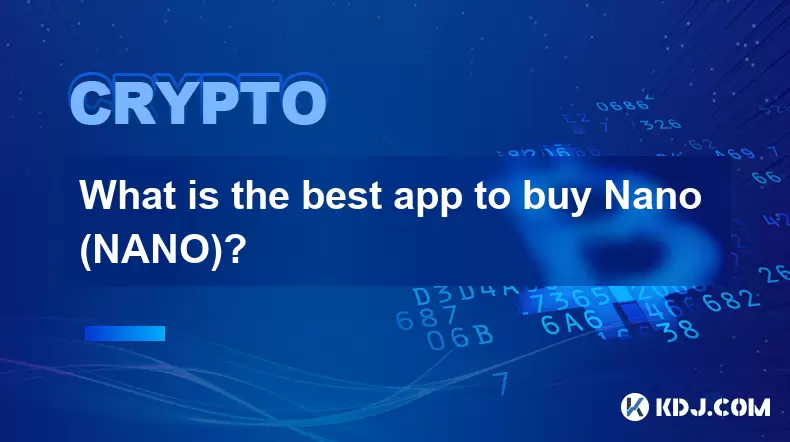
What is the best app to buy Nano (NANO)?
Aug 09,2025 at 03:35am
Understanding Nano (NANO) and Its Unique FeaturesNano is a feeless, instant cryptocurrency designed for fast peer-to-peer transactions. Unlike many ot...
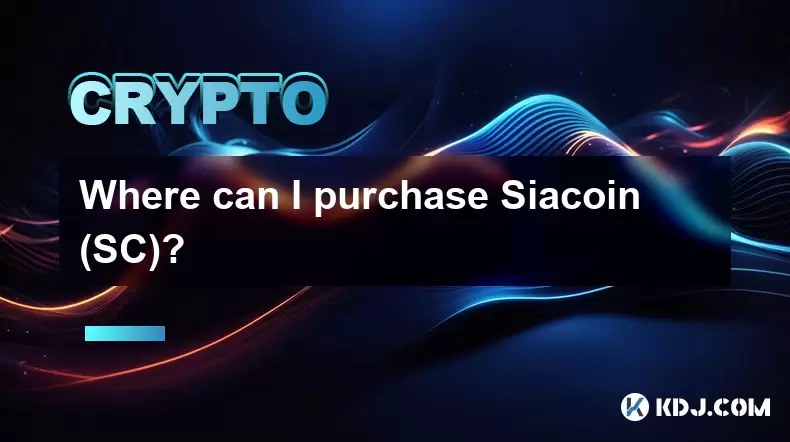
Where can I purchase Siacoin (SC)?
Aug 08,2025 at 11:14am
Understanding Siacoin (SC) and Its Role in the Sia NetworkSiacoin (SC) is the native cryptocurrency of the Sia decentralized cloud storage platform, a...

How to purchase Aragon (ANT)?
Aug 09,2025 at 11:56pm
Understanding Aragon (ANT) and Its PurposeAragon (ANT) is a decentralized governance token that powers the Aragon Network, a platform built on the Eth...

What is the most secure way to buy Ocean Protocol (OCEAN)?
Aug 10,2025 at 01:01pm
Understanding Ocean Protocol (OCEAN) and Its EcosystemOcean Protocol (OCEAN) is a decentralized data exchange platform built on blockchain technology,...

Where can I buy UMA (UMA)?
Aug 07,2025 at 06:42pm
Understanding UMA and Its Role in Decentralized FinanceUMA (Universal Market Access) is an Ethereum-based decentralized finance (DeFi) protocol design...

How to buy Storj (STORJ) tokens?
Aug 09,2025 at 07:28am
Understanding Storj (STORJ) and Its Role in Decentralized StorageStorj is a decentralized cloud storage platform that leverages blockchain technology ...

What is the best app to buy Nano (NANO)?
Aug 09,2025 at 03:35am
Understanding Nano (NANO) and Its Unique FeaturesNano is a feeless, instant cryptocurrency designed for fast peer-to-peer transactions. Unlike many ot...

Where can I purchase Siacoin (SC)?
Aug 08,2025 at 11:14am
Understanding Siacoin (SC) and Its Role in the Sia NetworkSiacoin (SC) is the native cryptocurrency of the Sia decentralized cloud storage platform, a...
See all articles





















